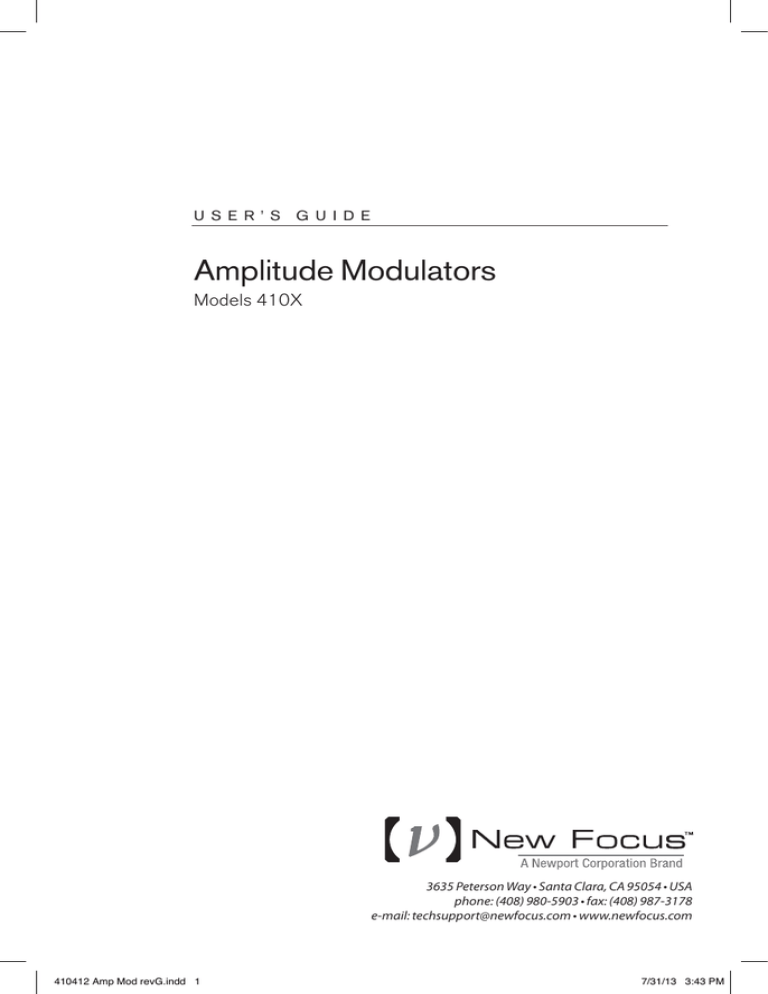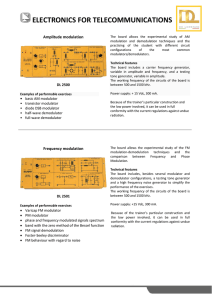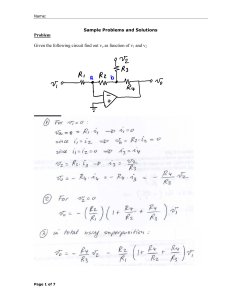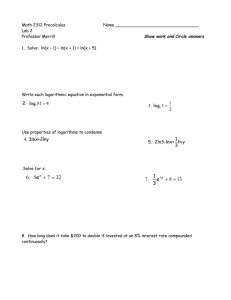
U S E R’S G U I D E
Amplitude Modulators
Models 410X
3635 Peterson Way • Santa Clara, CA 95054 • USA
phone: (408) 980-5903 • fax: (408) 987-3178
e-mail: techsupport@newfocus.com • www.newfocus.com
410412 Amp Mod revG.indd 1
7/31/13 3:43 PM
Warranty
Newport Corporation guarantees its products to be free of defects
for one year from the date of shipment. This is in lieu of all other
guarantees, expressed or implied, and does not cover incidental or
consequential loss.
Information in this document is subject to change without notice.
Copyright 2012, 2001-1998, Newport Corporation. All rights reserved.
The New Focus logo and symbol are registered trademarks of
Newport Corporation
Document Number 410412 Rev. G
410412 Amp Mod revG.indd 2
7/31/13 3:43 PM
Contents
Theory and Operation
Introduction. . . . . . . . . . . . . . . . . . . . . . . . . . . . . . . . . . . . . 5
Theory. . . . . . . . . . . . . . . . . . . . . . . . . . . . . . . . . . . . . . . . . . 5
Operation. . . . . . . . . . . . . . . . . . . . . . . . . . . . . . . . . . . . . . . 7
Linear Amplitude Modulation . . . . . . . . . . . . . . . . . . . . . . 9
Specifications. . . . . . . . . . . . . . . . . . . . . . . . . . . . . . . . . . 10
Customer Service
Technical Support. . . . . . . . . . . . . . . . . . . . . . . . . . . . . . . 11
Service . . . . . . . . . . . . . . . . . . . . . . . . . . . . . . . . . . . . . . . . 11
Appendix I
Performance Data . . . . . . . . . . . . . . . . . . . . . . . . . . . . . . . 12
3
410412 Amp Mod revG.indd 3
7/31/13 3:43 PM
4
410412 Amp Mod revG.indd 4
7/31/13 3:43 PM
Theory and Operation
Introduction
The New Focus 410X series electro-optic amplitude
modulators allow you to achieve deep amplitude
modulation of your laser beam with a small input
voltage, while maintaining large optical apertures.
We offer two types of modulators:
• Broadband Amplitude Modulators (AM) for
general-purpose applications.
• Resonant Amplitude Modulators (RAM) which
are tuned to user-specified frequencies.
Benefits include low drive voltage, high modulation
frequency, low insertion loss, good RF shielding,
and high power handling capability. Specifications
are show in the table on page 10. The 4101, 4102,
4103 and 4104 modulators are provided in lithium
niobate. The user is free to define the modulation
frequency of the resonant modulators.
Theory
The 410X series amplitude modulators require
external polarizers at the input and output. Without
the external polarizers, these amplitude modulators
are actually voltage-variable waveplates. (Polarizers
are not provided with the modulators so that you
5
410412 Amp Mod revG.indd 5
7/31/13 3:43 PM
may vary the polarizers used according to your
specific application.)
When the amplitude modulator is placed between
crossed polarizers the output is given by the
equation:
I0=Ii Sin2 VVi 2π + φ0
π
•
where Ii is the input intensity, f0 is any intrinsic or
extrinsic state phase bias, Vi is the input drive
voltage, and Vπ is shown approximately in the
specifications table on page 10. The extinction ratio
depends on the quality of the polarizers. With
high-quality polarizers, extinction ratios of 50:1 are
achievable.
When the DC bias is set to Vπ/2 the output intensity
is given by:
Performance of the amplitude modulators is
defined by insertion loss, Vπ, and the voltage
standing wave ratio (VSWR).
Insertion Loss
Insertion loss is determined by the absorption and
scatter in the electro-optic crystal, and by the
quality of the anti-reflection coatings on the end
faces. Low optical losses are critical in applications
of the New Focus amplitude modulators, so great
care is taken to ensure insertion loss is minimized.
Modulation Depth
6
410412 Amp Mod revG.indd 6
This describes the magnitude of the amplitude
modulation imposed on the input laser beam by
the modulator. This depth is optimized by New
Focus’ resonant circuit design which drives the
resonant modulator, and by optimizing the
alignment of the input beam’s polarization with the
crystal active axis.
7/31/13 3:43 PM
Voltage Standing Wave Ratio (VSWR)
The VSWR describes the level of impedance
matching between the driving source and the
amplitude modulator, which directly affects the
power transfer into the device. Resonant amplitude
modulators are designed to be very close to 50 Ω at
resonance. Thus, they will have a greatly enhanced
return loss at the specified resonant frequency. All
New Focus resonant amplitude modulators are
accurately tested for VSWR by looking at return loss
vs. frequency around the modulation frequency.
These results are provided at the rear of this
manual.
Operation
Aligning the module to the optical beam:
1. Mount the module on an adjustable positioning device using the 1/4”-20 tapped hole on
the base of the module. We recommend the
New Focus Model 9071 tilt aligner because of
its tilt and translation capabilities.
2. Turn on the optical beam. Orient the beam so
it is vertically or horizontally polarized on the
input aperture. The x- and z-crystal axes are
oriented ±45° with respect to vertical. Polarizers are not provided with the amplitude
modulators.
3. Position and align the module so that the
beam passes through the 2-mm input and
output apertures, clearing them without
clipping. The beam should be collimated with
a diameter of less than 2 mm, but such that
the Rayleigh range is at least the length of the
crystal. A good beam diameter is 200–500 µm.
7
410412 Amp Mod revG.indd 7
7/31/13 3:43 PM
Since the optical alignment on any modulator can be
disturbed by the drive cable, ensure that the cable
does not place a significant force on the modulator.
Figure 1:
A highfrequency
resonant
modulator
driven by a
source tuned
to fR. The
module is
mounted on a
Model 9071 tilt
aligner.
POLARIZATION
DIRECTION
APERTURE
SOURCE
f = fR
Setting Up the Input Signal:
Using a cable with an SMA connector, connect the
input port on the back of the module to a modulating
source appropriate for the type of modulator you are
using (resonant or broadband).
Resonant modulators are tuned to a specific
frequency and require very low drive voltages, such as
that from a simple crystal oscillator or a function
generator that has an output impedance near 50 Ω.
Resonant modulators have a greatly reduced return
loss at the specified frequency compared to
broadband modulators.
Broadband modulators require large drive voltages
and have a bandwidth dependent on the impedance of
the modulating source. With a 50-Ω source, the
bandwidth will be approximately 200 MHz. The source
must be able to drive an open circuit without causing
damage to the source.
8
410412 Amp Mod revG.indd 8
7/31/13 3:43 PM
Linear Amplitude Modulation
Figure 2:
The transfer
function of an
amplitude
modulator
between crossed
polarizers is a sin2
function.
Linear amplitude modulation can be achieved over a
limited range by biasing the amplitude modulator at
the quarter-wave point which is equivalent to the
50%-transmission point. This can be achieved either
by applying a DC-bias voltage and a small RF signal to
the modulator, or by including a quarter waveplate
oriented either vertically or horizontally.
9
410412 Amp Mod revG.indd 9
7/31/13 3:43 PM
Specifications
4101
4103
4102
4104
500-900 nm (4101)
900-1600 nm (4003)
500-900 nm (4102)
900-1600 nm (4104)
Resonant AM
Broadband AM
.01 - 250 MHz
(single frequency)
DC-200MHz
Max Vπ
16 V (532 nm)
30 V (1000 nm)
160 V (532 nm)
300 V (1000 nm)
Material
LiNbO3
LiNbO3
2
0.5 W/mm (532 nm)
1 W/mm2 (1300 nm)
0.5 W/mm2 (532 nm)
1 W/mm2 (1300 nm)
2 mm
2 mm
<0.3 dB
<0.3 dB
2-4 % of center
frequency
200 MHz
Wavelength
Type
Operating Frequency*
Max Optical
Intensity**
Aperture
Insertion Loss***
RF Bandwidth
Connector
SMA
SMA
Impedance
50 Ω
10 pF
Max. RF Power
1W
10 W
Max VSWR
1.5
N/A
* Resonant modulators must be specified to a single frequency.
** In a 1 mm beam.
*** Insertion loss is wavelength dependent.
10 410412 Amp Mod revG.indd 10
7/31/13 3:43 PM
Customer Service
Technical Support
Information and advice about the operaion of any New Focus
product is availabe from our applications engineers. For
quickest response, ask for “Technical Support” and know the
model number and serial number for your product.
Hours: 8:00–5:00 PST, Monday through Friday (excluding
holidays).
Toll Free: 1-866-NUFOCUS (1-866-683-6287)
(from the USA & Canada only)
Phone:(408) 980-5903
Support is also available by fax and email:
Fax:
(408) 987-3178
Email:techsupport@newfocus.com
We typically respond to faxes and email within one business
day.
Service
In the event tht your modulator malfunctions or becomes
damaged, please contact New Focus for a return authorization
number and instructions on shipping the unit back for
evaluation and repair.
11
410412 Amp Mod revG.indd 11
7/31/13 3:43 PM
Appendix I
Model Number:
_________________________________
Serial Number:
_________________________________
Frequency:
_________________________________
Wavelength:
_________________________________
Input RF Power:
_________________________________
Return Loss:
_________________________________
VSWR:
_________________________________
Q:
_________________________________
12 410412 Amp Mod revG.indd 12
7/31/13 3:43 PM





